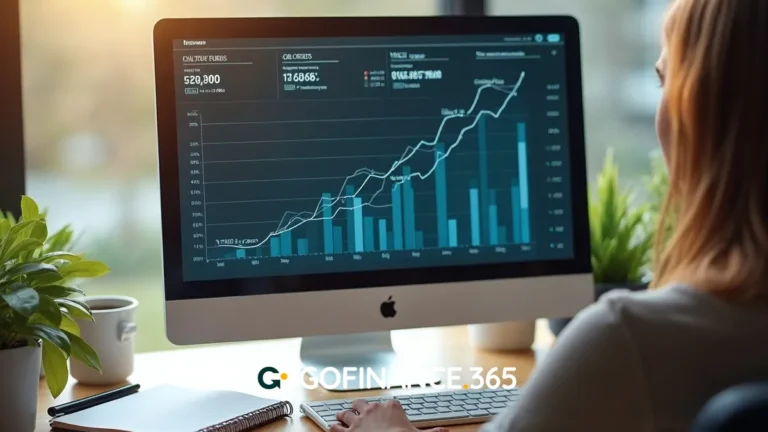Table of contents:
Did you know that the average person pays for at least 5 to 10 digital services per month without being fully aware of it? Streaming platforms, cloud storage, software, productivity apps… subscriptions have become part of the modern financial landscape. The problem is that we often continue to pay for things we don’t even use, which is why we want to offer you this step-by-step guide to help you learn how to manage your digital subscriptions and save money every month, without complications or surprises in your bank account.
Managing your subscriptions wisely is key to optimizing your monthly budget. It allows you to have greater control over your spending, eliminate unnecessary payments, and allocate that money to what really matters. If you’re looking for a simple, organized, and effective way to save money without compromising your quality of life, this guide is for you.
Why is it important to monitor your digital subscriptions today?
The subscription model has become the norm for accessing digital content, tools, or services. However, this convenience can translate into silent spending that affects your financial health without you even realizing it.
Detecting, evaluating, and optimizing your digital payments allows you to gain clarity and financial freedom effortlessly.
Step 1: Identify all your active subscriptions
The first step is to make the invisible visible. Identifying all your subscriptions is essential to getting a complete picture.
You can do this manually by reviewing your bank statements and emails, or use financial management apps that automatically detect recurring subscriptions. Some digital banks also offer this feature. Don’t underestimate small charges: they may be the trace of a forgotten subscription.
Step 2: Evaluate whether you actually use each service
It’s not enough to know what you’re paying for. Now you need to assess whether each service provides real value or whether you’re simply keeping it out of habit. This evaluation requires honesty, but it can mean significant monthly savings.
Criteria for deciding whether to keep, pause, or cancel
- Do you use it at least once a week?
- Does it help you work better or save time?
- Does it bring you pleasure, value, or continuous learning?
If the answer is “no” for most of these questions, it’s time to cancel or pause. Many platforms allow you to freeze the service without losing any data.
Duplicate or similar services that you should consolidate
Avoid paying for multiple services that perform the same function. For example:
- Spotify + YouTube Premium + Tidal
- Dropbox + Google Drive + iCloud
- Netflix + HBO + Disney+ if you don’t use all of them
Choose the one that best suits your current needs.
Step 3: Take advantage of free trials and promotions without committing
Free trials can be a great way to evaluate services before committing. However, they can also be a trap if you forget to cancel them on time. The trick is to use them strategically.
Create a temporary account for each free trial and set a reminder two days before the renewal date. If you decide to stay, do so because you really need it, not because you forgot.
Step 4: Advanced strategies to pay less
Once you know which subscriptions you need, the next step is to optimize them. There are many ways to reduce the monthly price while still enjoying the service. It takes a little planning, but the savings can be significant.
Negotiating prices, switching plans, or taking advantage of family options are simple tactics that give you the same value for less money. You can also legally share services to split the cost.
Legally sharing accounts and platforms
Some services allow sharing with family or friends.
Take advantage of these options while respecting the terms and conditions to avoid penalties.
Switch to annual, family, or discounted prepaid plans
Annual plans usually offer a 10-30% discount.
Some services offer 1 or 2 months free if you pay for the whole year in advance.
Check if you are eligible for special student, educator, or business rates.
Step 5: Automate your monthly financial control
The key to long-term savings is automation. Once you have your subscriptions under control, set up alerts and routines so you don’t fall back into unnecessary payments. Organization is your best ally.
You can use personal finance apps such as Fintonic, Spendee, or even Google Calendar to automate renewal reminders or monthly reviews.
How to set up reminders for renewals
- Use your mobile calendar with alerts 48 hours before the payment is due.
- Mark the first day of each month for a general review.
- File subscription emails in a dedicated folder so you always have them handy.
Monthly review with your personal budget: make it a habit
Include reviewing your subscriptions as part of your monthly financial routine. It will take less than 15 minutes and can save you hundreds a year. Check for price changes, promotions, or new needs.
Organize, optimize, and enjoy without paying more
Now that you know how to manage your digital subscriptions and save money every month, you have a powerful tool to improve your personal finances. It’s not about getting rid of everything, but about choosing wisely, paying only for what you use, and doing it smartly.
With these steps, you’ll not only save money, but you’ll also gain clarity and control over your financial life.
Frequently asked questions about managing subscriptions and saving money
We’ve compiled the most common questions that arise when you start organizing your digital subscriptions. These answers will help you make more informed and confident decisions.
How can I tell if I have subscriptions I don’t use?
Check your bank statement for the last 2-3 months. Look for recurring charges and check if you actually use that service. You can also install apps such as Truebill, Rocket Money, or Wallet to detect active subscriptions.
How much can you save per year by managing your subscriptions well?
Depending on your level of spending, the average annual savings can range from $200 to $1,000. Just by canceling duplicate or rarely used services, you can already see a big impact on your budget.















